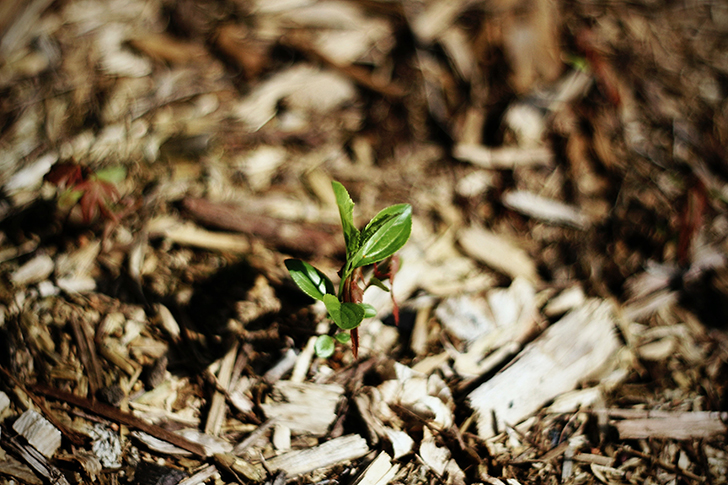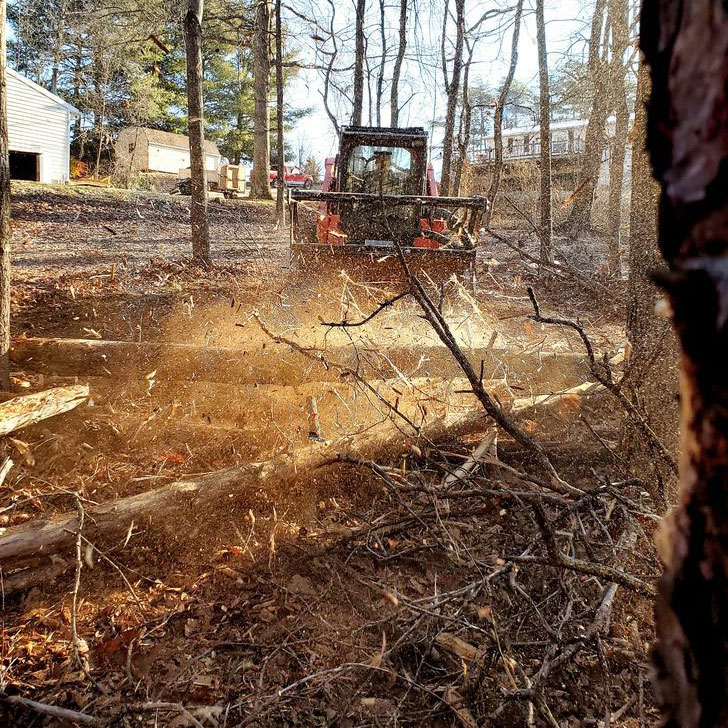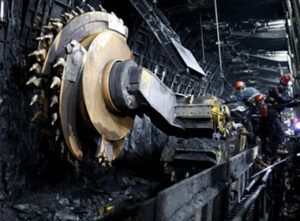Forestry mulching is a familiar term especially to farmers and landowners since they need to regularly clear acres of land. It is not an easy task to clear land covered with overgrown vegetation. Apart from the cost of time and money, efficiency and sustainability are also important factors that should be considered. Luckily, forestry mulching is the solution. Other people might be unfamiliar with forestry mulching. Today, we will discuss forestry mulching from different aspects, including its definition, applications, equipment, and advantages.

(Image Source: Unsplash)
What Is Forestry Mulching?
As a popular land-clearing method, forestry mulching simply utilizes a machine called a mulcher to cut, grind, and clear unwanted overgrown vegetation from a selected area. Meanwhile, a fine layer of ready-for-use mulch is left behind.
Forestry mulching happens after a land-clearing project. Since there will be leftover vegetation remnants, such as trees, grasses, branches, and brush once the land clearing job is finished, forestry mulching is required to turn them into mulch, which is a type of environmentally friendly ground covering. This layer of organic covering will break down and be absorbed into the soil as nutrients to make it more fertile. Besides, the mulch layer can also protect the soil against erosion and stabilize the ground, encouraging the growth of native vegetation.
Applications Of Forestry Mulching
Forestry mulching is not only beneficial for private projects like gardens and farmlands but also advantageous to public projects and the ecological environment.
Public, commercial, and residential land clearing
Public, commercial, and residential land-clearing projects also need mulching, including cutting and clearing brush, seismic exploration, site preparation and development, and nature and recreational trail creation. For right-of-way clearing and maintenance, forestry mulching is an essential method of removing stumps, trees, and other vegetation completely.
Wetlands and wildlife habitats conservation
Forestry mulching is a crucial way to recover and maintain wildlife habitats for various wild animals such as deer, doves, and other animals. By forestry mulching, invasive underbrush and species are removed. Thus, animals’ food sources like grasses are rejuvenated, and they get access to water. Besides, certain wild animals can have more space to breed and shelter from severe weather.
Invasive species control
Invasive species mainly refer to invasive plants and insects. The control of invasive species is of great importance for they can damage the native ecosystem. Invasive plants such as Russian olive, multiflora rose, tamarisk, and Juniperus virginiana can absorb a huge amount of groundwater and cause damage to the water table. Removing these plants can rebuild the native habitat. Invasive insects such as longhorn beetles and mountain pine beetles can destroy forests. Rotten trees are left behind without original timber value.
With forestry mulching, invasive plants are easily removed without ruining the native species, thus decreasing the stress on native trees caused by crowding. In addition, the discharged materials are settled within a well-restricted area. Other methods like rotary cutters tend to disperse invasive insects into neighboring healthy plants.
Wildfire prevention and management
By removing fuel sources such as decaying trees and leaves, mulching reduces the potential wildfire risk. When a fire breaks out, forestry mulching can control active fire and leave minimal clean-up requirements, reducing overall costs. After the fire is put out, forestry mulchers can prevent soil erosion and reduce water pollution.
Equipment Used In Forestry Mulching

(Image Source: Pinterest)
The machine used in forestry mulching is a forestry mulcher, forest masticator, or brushcutter. It is equipped with a rotating drum that comes with many replaceable steel teeth or blades to cut vegetation into small pieces. Carbide tips are welded onto these cutting teeth or blades for superior durability. In addition to the mulching machine specifically for forestry mulching, there are mulching heads that can be mounted on excavators, tractors, or skid steers as attachments. There are several types of mulchers with different features, including freestanding mulchers, lawn tractor mulchers, commercial mulchers, dual-purpose mulchers, electric-powered mulchers, and gas-powered mulchers.
Advantages Of Forestry Mulching
Forestry mulching contributes a lot to land and vegetation management. Compared to other traditional methods, it is cost-efficient and environment-friendly. Scroll down to discover the advantages of forestry mulching.
Eco-Friendly
Unlike traditional methods of land management which can lead to soil erosion, forestry mulching can well preserve the soil structure. The unwanted leaves and weeds, rotten stumps, and other overgrowth vegetation can be converted into a layer of erosion barrier that will nourish the soil in the long run.
Mulching can suppress the growth of weeds. Through mulching, weeds that are left behind on the ground are covered by a layer of shredded vegetation, thus having no access to the sunlight and gradually dying out.
Mulching can kill pests and invasive insects in the soil. Most of these bugs live within overgrowth grasses. By forestry mulching, grasses are removed. This limits the population of pests such as ticks.
Cost-efficient
With a mulcher or mulching head, you can efficiently clear your lands. There is no need to utilize multiple other machines like loaders, bulldozers, and tractors. This further reduces labor costs. Besides, thanks to forestry mulching, all the vegetation leftover won’t be hauled away and end up in the landfill.
Not limited by terrain and weather
Forestry mulching is a type of land-clearing method that is not limited by terrain and weather. You can perform it whenever and wherever you want. It can handle even the harshest terrain and the most challenging weather. Whether it is a tight area or a steep slope, and snowy or rainy weather, mulching is the best choice for land clearing.
Requiring no permits
Forestry mulching requires no advance formal permits or permissions from the government for average-sized plots.








